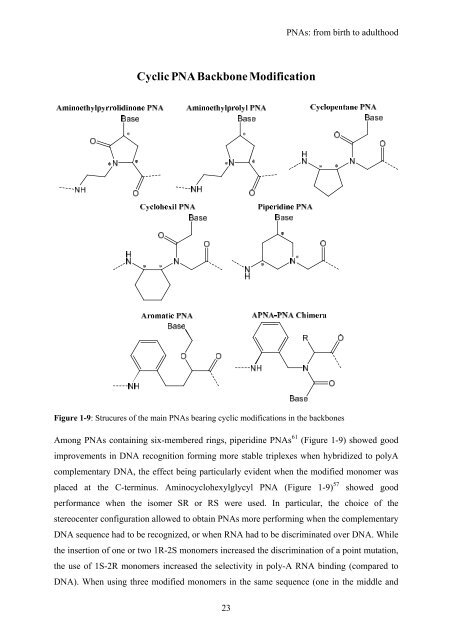View - DSpace UniPR
View - DSpace UniPR
View - DSpace UniPR
Create successful ePaper yourself
Turn your PDF publications into a flip-book with our unique Google optimized e-Paper software.
PNAs: from birth to adulthood<br />
Cyclic PNA Backbone Modification<br />
Figure 1-9: Strucures of the main PNAs bearing cyclic modifications in the backbones<br />
Among PNAs containing six-membered rings, piperidine PNAs 61 (Figure 1-9) showed good<br />
improvements in DNA recognition forming more stable triplexes when hybridized to polyA<br />
complementary DNA, the effect being particularly evident when the modified monomer was<br />
placed at the C-terminus. Aminocyclohexylglycyl PNA (Figure 1-9) 57 showed good<br />
performance when the isomer SR or RS were used. In particular, the choice of the<br />
stereocenter configuration allowed to obtain PNAs more performing when the complementary<br />
DNA sequence had to be recognized, or when RNA had to be discriminated over DNA. While<br />
the insertion of one or two 1R-2S monomers increased the discrimination of a point mutation,<br />
the use of 1S-2R monomers increased the selectivity in poly-A RNA binding (compared to<br />
DNA). When using three modified monomers in the same sequence (one in the middle and<br />
23
















